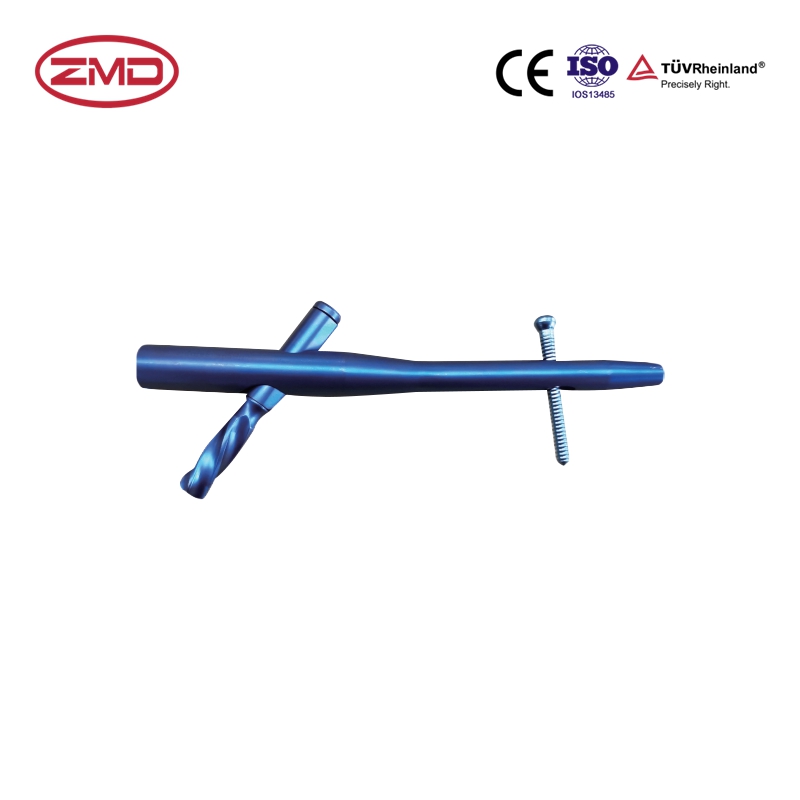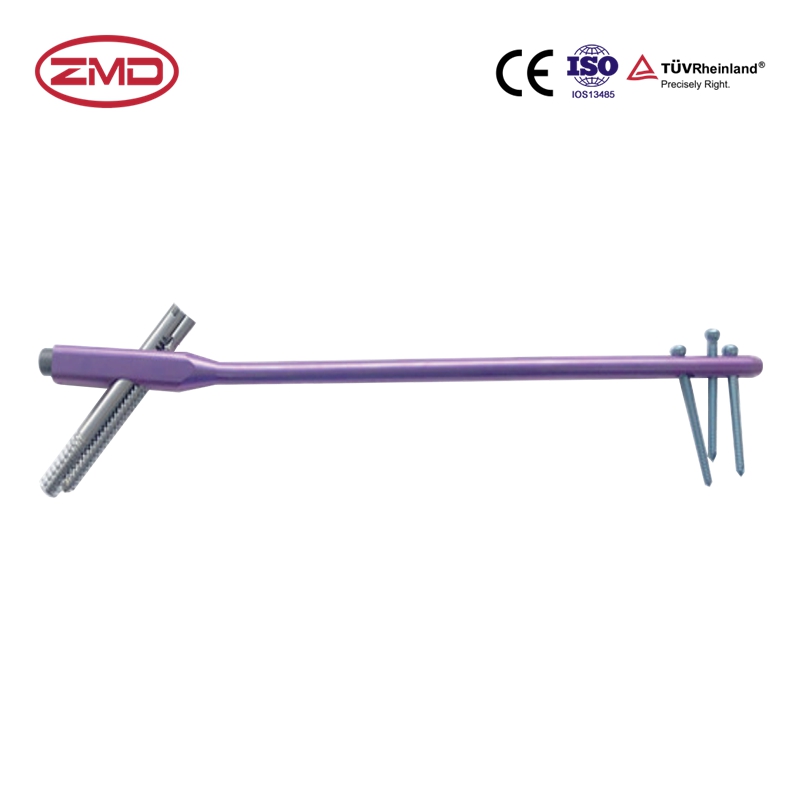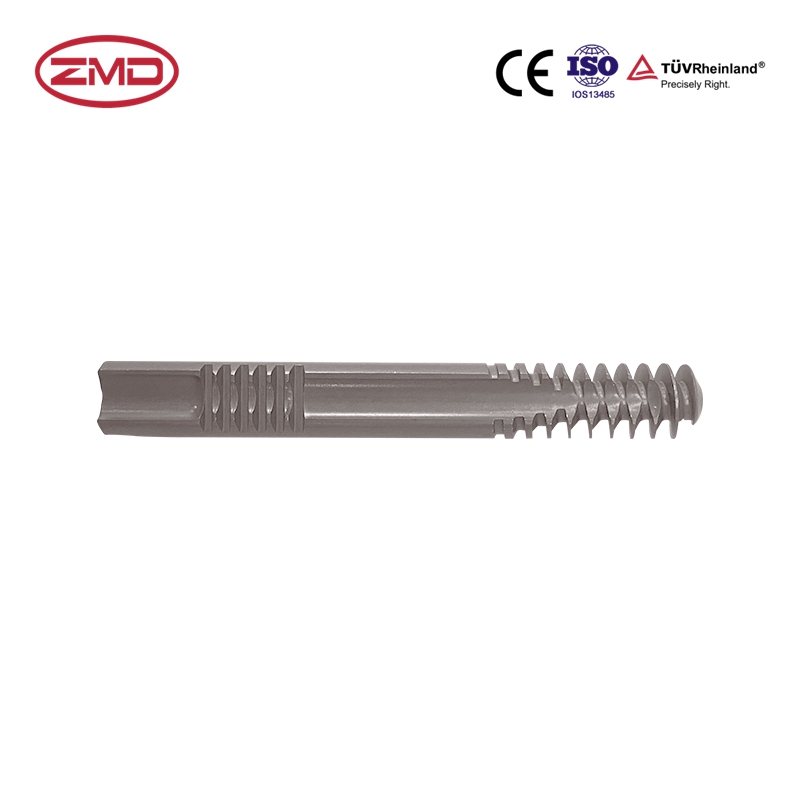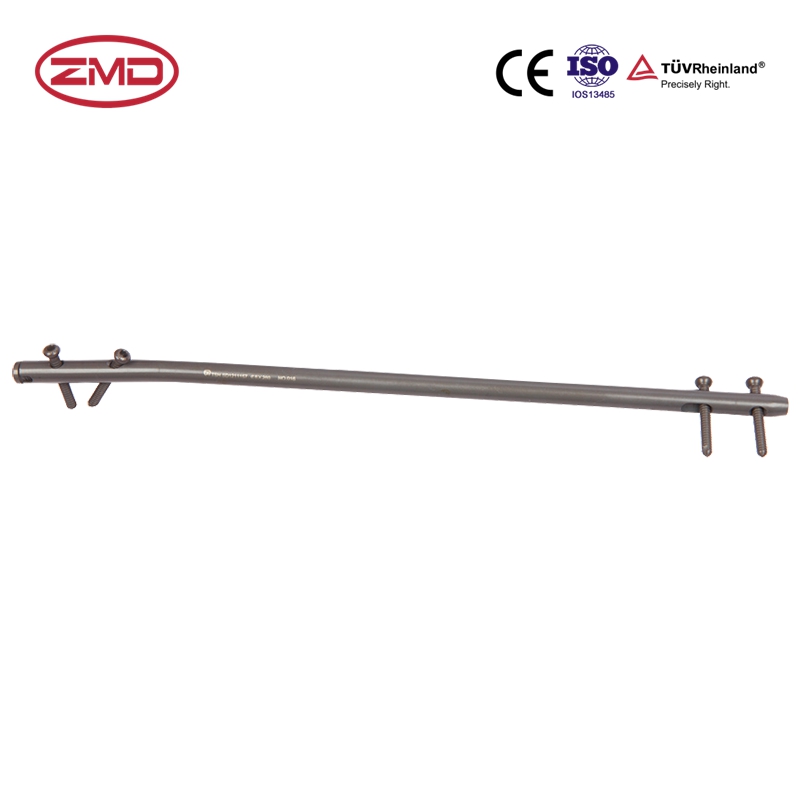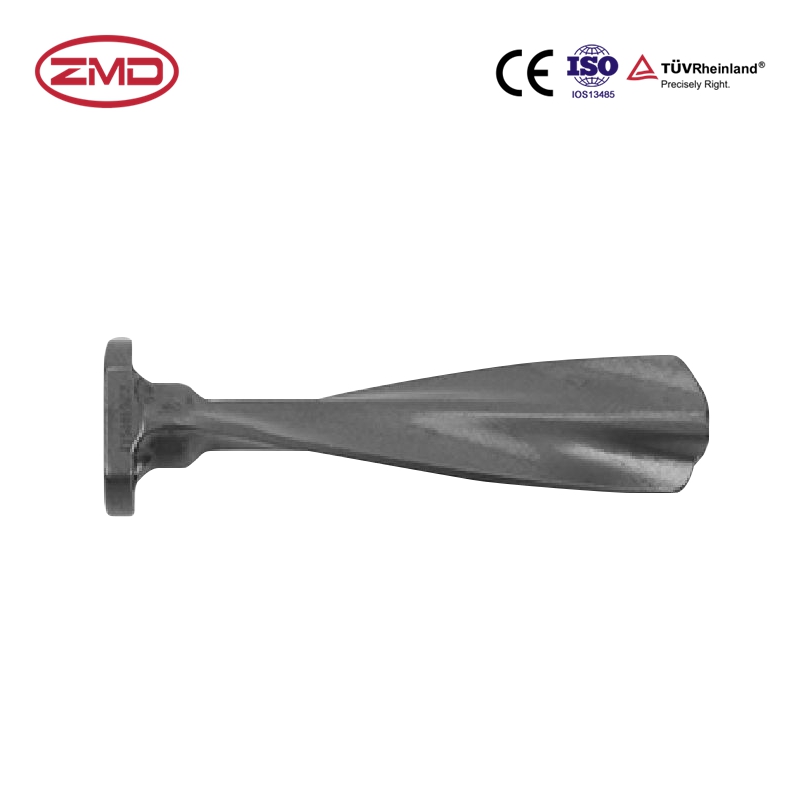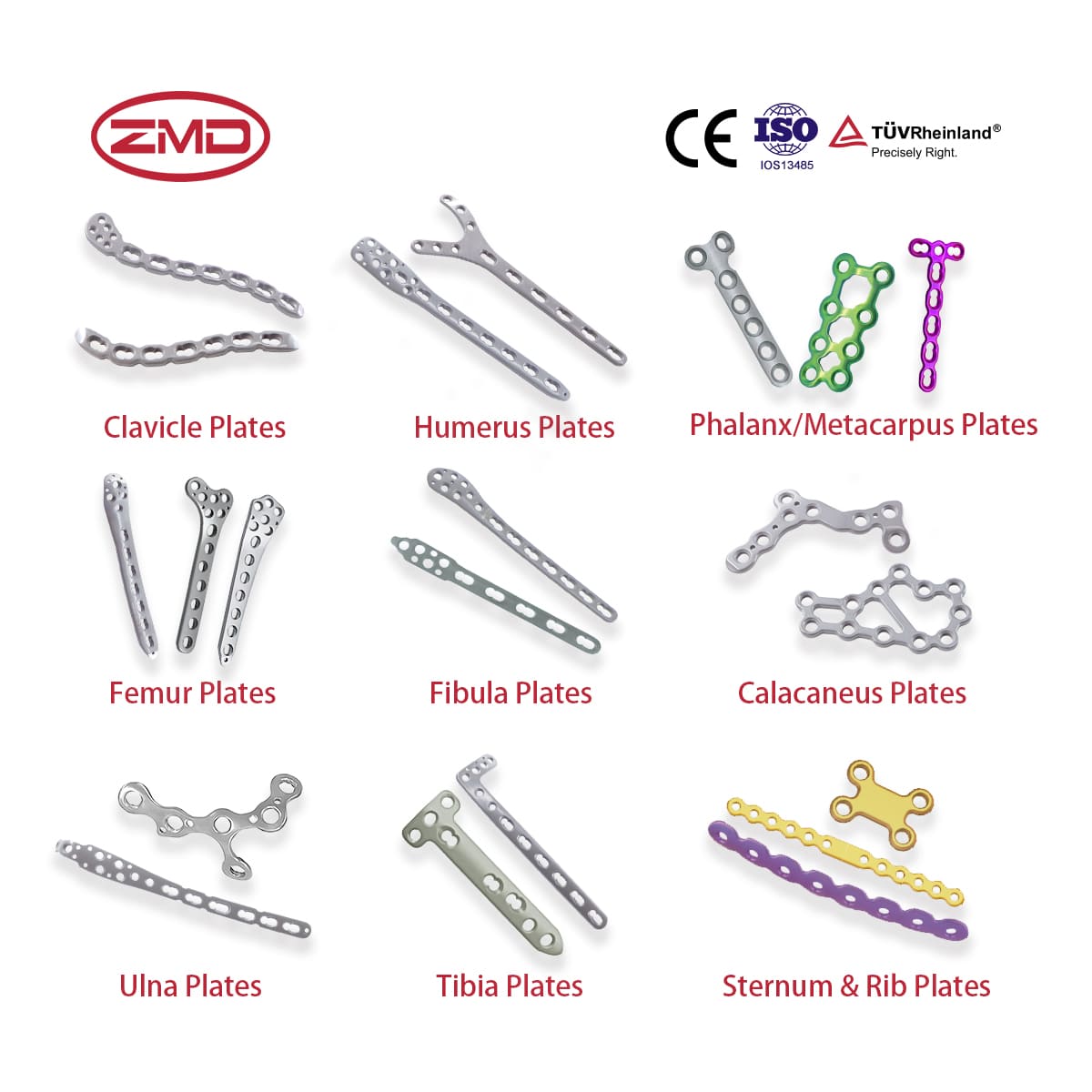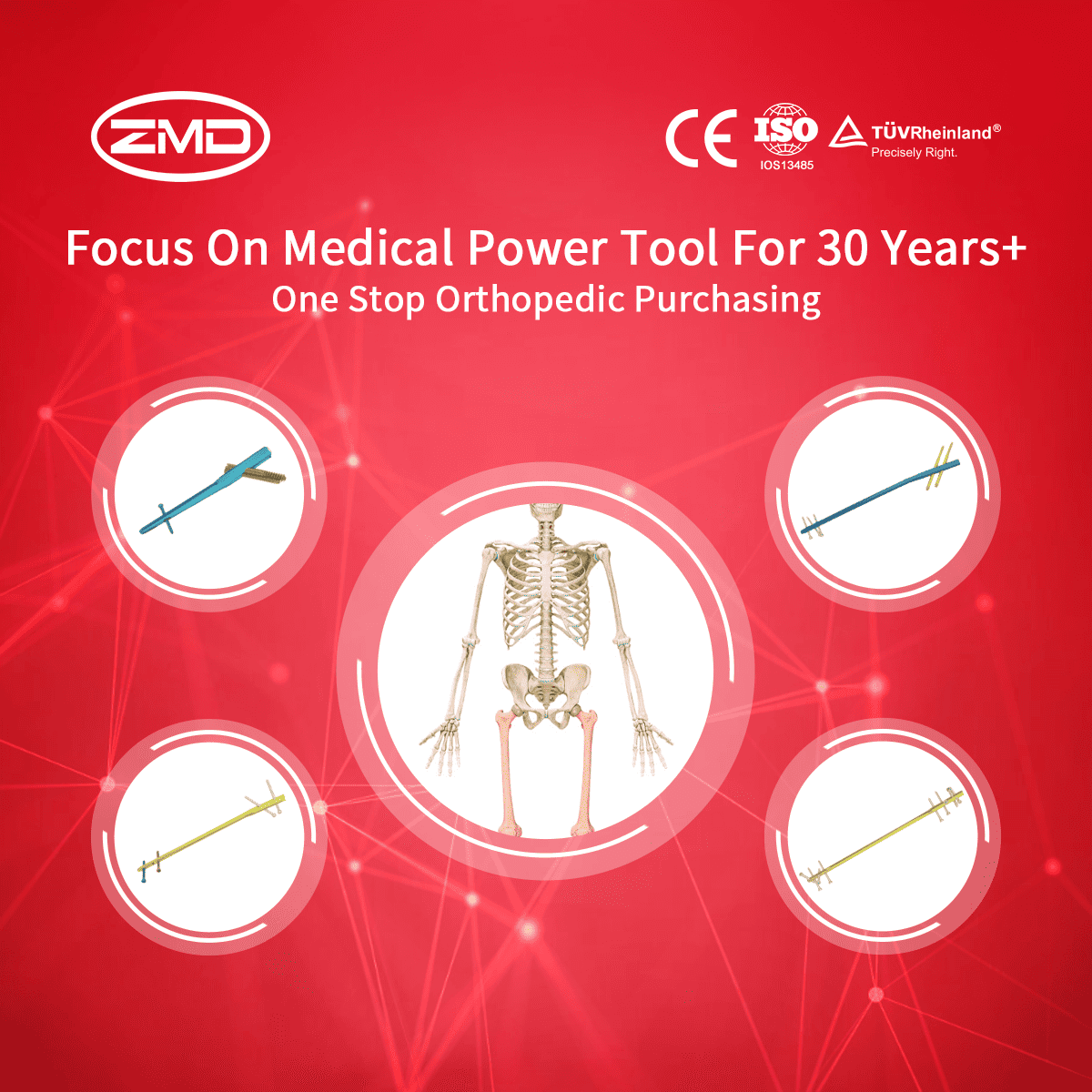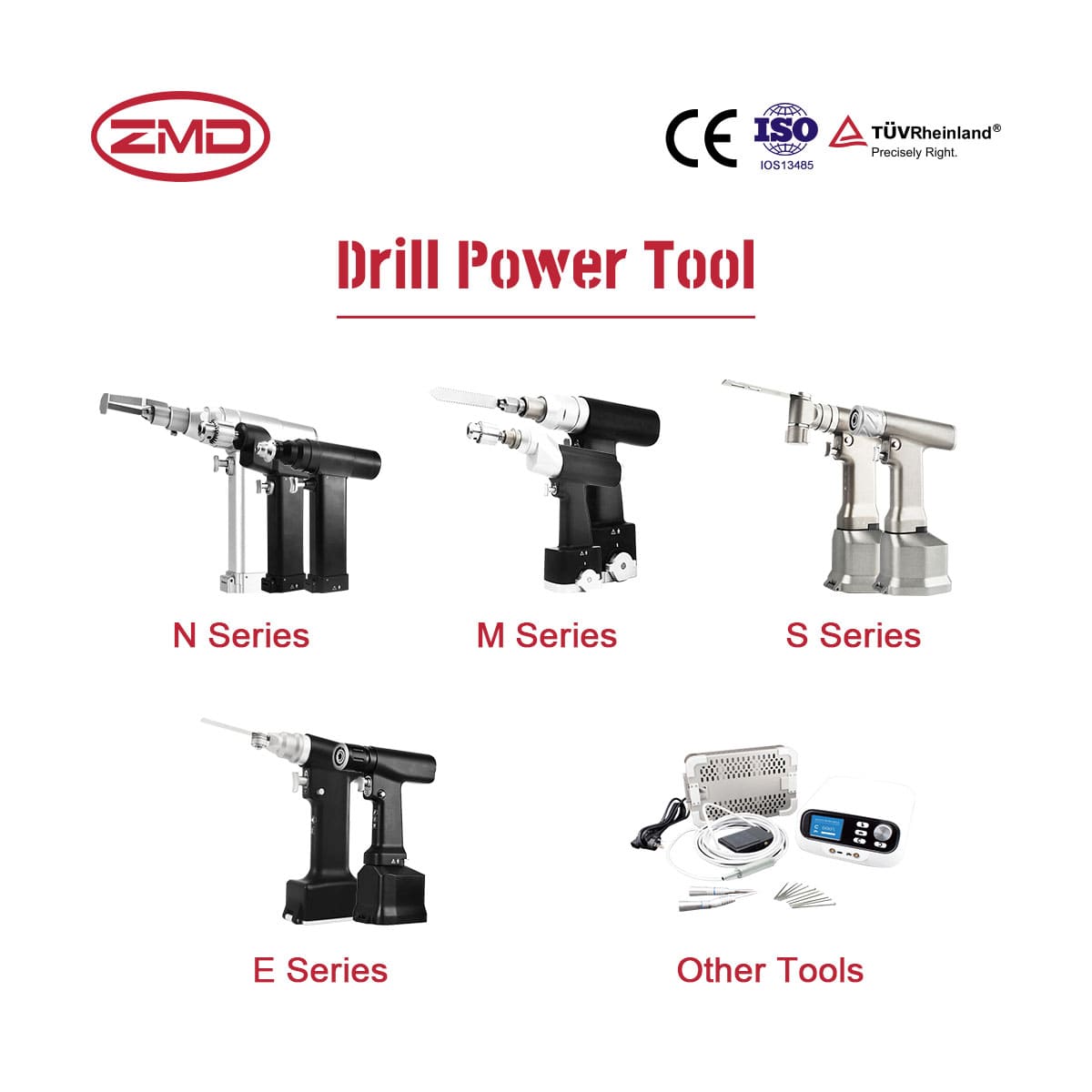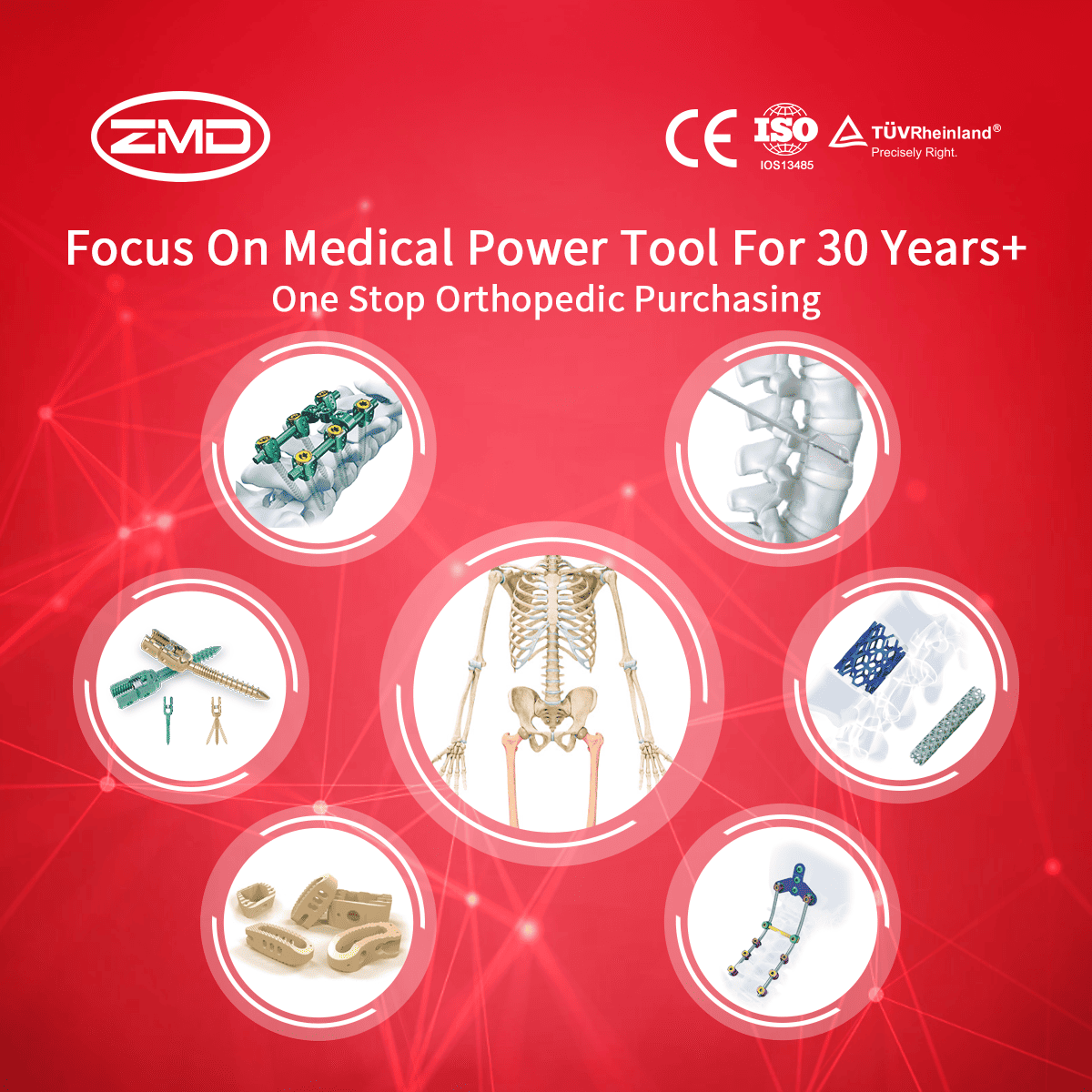Intramedullary Nail System
ZMD
Orthopedic Products
Haven't been able to locate the product you're searching for yet?
If you're interested in more orthopaedic implant products, feel free to get in touch with our ZMD consultants.
What is an Intramedullary Nail System?
An intramedullary nail system (IM nail system), a crucial surgical implant, plays a pivotal role in treating long bone fractures. This system features a lengthy, rod-shaped nail, which is carefully inserted into the hollow medullary canal within the fractured long bone. By being placed there, it offers internal reinforcement and helps maintain the correct alignment of the bone segments. This support is essential as it creates an environment conducive to proper bone healing, enabling patients to recover and regain normal function of the affected limb over time.

Types of Intramedullary Nails:
- Humeral nails: Specifically engineered to address fractures that occur in the humerus, which is the bone located in the upper arm. These nails are crafted with the unique anatomical features and biomechanics of the humerus in mind to ensure optimal fixation and support for proper healing.
- Tibial nails: Tailored to deal with fractures of the tibia, the shin bone. Given the specific load-bearing and structural requirements of the tibia, these nails are designed to provide stability and alignment that are crucial for the bone to heal effectively following a fracture.
- Femoral nails: Created to handle fractures of the femur, the thigh bone. As the femur is one of the largest and strongest bones in the body, femoral nails are built with robust features to withstand significant forces and maintain the correct position of the bone fragments during the healing process.
- Elastic nails: These are flexible in nature and are primarily utilized for fractures in children. Due to the growing nature of children’s bones and their different biomechanical needs compared to adults, elastic nails offer a suitable option where rigid fixation might not be the best choice. They can also be employed in other specific situations where a more pliable form of fixation is preferred to allow for some degree of movement while still providing necessary support for the healing bone.

When are Intramedullary Nail Systems Needed?
Diaphyseal Fractures
Metaphyseal Fractures
Interarticular Fractures
Specific Indications for Intramedullary Nail Systems
Fractures in Patients with Osteoporosis
Open Fractures
Complex Fractures
Fractures in Patients with Multiple Injuries
Blog
International Women’s Day: Salute to the “She – Power” at ZMD
International Women’s Day: Salute to the “She – Power” at ZMD Amid the trends of “Intelligent Medical Devices” and “Minimally Invasive Medical Technologies”, ZMD thrives
Discover Innovation with Sunan Medical at AAOS
Discover Innovation with Sunan Medical at AAOS The American Academy of Orthopaedic Surgeons (AAOS) Annual Meeting is the premier event for orthopedic professionals worldwide, offering
Visit Us at Expomed Eurasia 2025: Discover Sunan Medical’s Innovations
Visit Us at Expomed Eurasia 2025: Discover Sunan Medical’s Innovations The 32nd Expomed Eurasia, taking place from April 24-26, 2025, at the Tüyap Exhibition and




